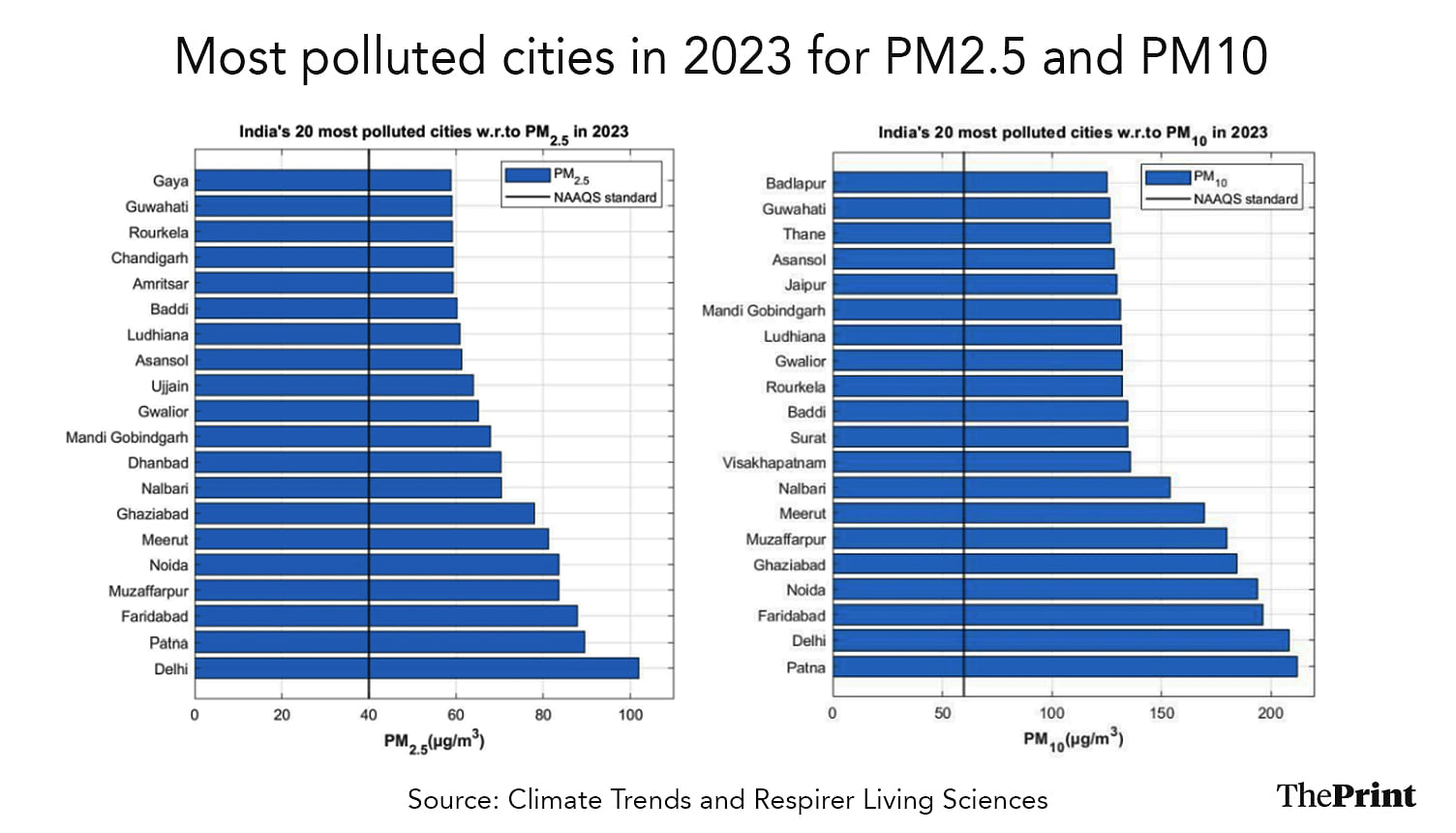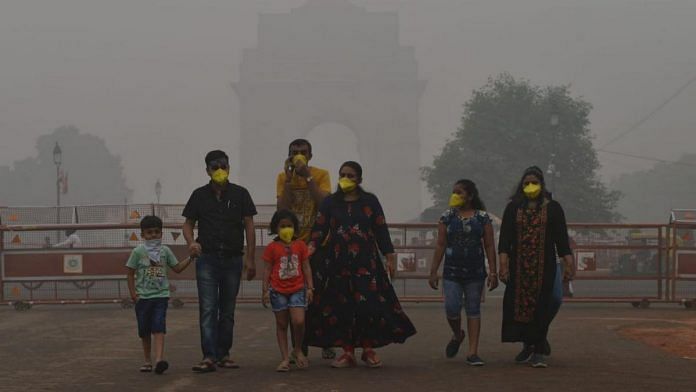Over 85 per cent of India’s population lives in areas where the air pollution level exceeds the WHO standard, reducing average lifespans by more than five years—11.9 years for people living in NCR. In 2019, the Indian government launched the National Clean Air Programme, which aimed to reduce PM2.5 exposure levels by 20-30 per cent within five years in 131 ‘non-attainment’ cities.
The programme, at the cusp of its five-year deadline, has not curbed the rising pollution levels.
Data from the Continuous Ambient Air Quality Monitoring Stations from 2019 to 2023 indicates significant increases in PM2.5 exposure in cities such as Navi Mumbai (46 per cent), Ujjain (46 per cent), and Mumbai (38 per cent), challenging conventional beliefs about pollution hotspots.

What explains NCAP’s failure in reducing pollution levels? While ineffective enforcement of policy solutions is believed to be the reason, we argue that there is a complex web of four factors—inadequate demand for clean air, entrenched industry practices, executive motivation, and institutional setup. We suggest solutions that incentivise the mitigation and reduction of pollution levels.
Coordination trap in enforcement: India’s air quality regulatory framework, including NCAP, is led by the Central Pollution Control Board (CPCB). However, it faces significant challenges in effectively managing air pollution as it lacks statutory enforcement power and accountability to play regulator. Additionally, the State Pollution Control Boards (SPCBs)—crucial for local enforcement—lack adequate funding, a problem exacerbated by the high public debt in states such as Punjab where debt amounts to half of its GDP. Punjab is also among the list of states with ‘poor’ air quality in the country.
Air pollution in India is a transboundary problem, requiring coordinated action across states. However, the spillover effects and weak SPCBs lead to reduced incentives and further inaction, creating a complex coordination challenge.
Inadequate demand by regional governments: Urban Local Bodies (ULBs), responsible for implementing NCAP locally, show varied performance in fund utilisation. Between 2019 and 2023, only about 60 per cent of Rs 9,649.99 crore allocated to 131 cities under NCAP was used. While some cities, like Ulhasnagar, Bhubaneswar, and Chennai spent more than their allocation, others like Visakhapatnam and Nashik spent none. Even New Delhi utilised less than 30 per cent of its allocated funds.
Inadequate demand by civil society: Public demand for clean air is low, as indicated by a nationwide survey conducted by the Association for Democratic Reforms (ADR) across 534 Lok Sabha constituencies, ranking air pollution 17th in priority among governance issues. This lack of public outcry, partly due to pollution’s less immediate impacts compared to crises like Covid-19, reduces political motivation to address the problem. Additionally, despite available market solutions like air purifiers, public uptake—even among the affluent—has been slow until recently.
Entrenched industrial practices: Industries such as construction, transport, and agriculture are major contributors to India’s air pollution, according to most studies. Practices like stubble burning in agriculture and lack of pollution mitigation in construction and transport sectors are deeply entrenched. For example, road and construction dust have been consistently found to be major sources of particulate matter in cities, and the preference for internal combustion engine (ICE) vehicles in states with high car ownership perpetuates vehicular pollution. These industry practices present significant barriers to improving air quality in India.
Bureaucratic push for clean air
Empirical research has proven that aligning bureaucratic incentives with environmental outcomes can lead to more proactive pollution control. Therefore, all-encompassing bureaucratic, market, and civic incentives for sustaining clean air must evolve beyond punitive measures, and instead employ the following strategies:
- Strengthen institutional incentives: The NCAP should become more than just a list of guidelines—a mission that ties financial incentives to air quality outcomes. Implementing a competitive federalism approach, such as the Swachh Bharat Mission (SBM), can drive civic and political demand for clean air. This could involve using systems, like the star rating in SBM, within NCAP that incentivise urban local bodies through central government funds based on their performance in improving air quality. The significant increase in cleanliness indicators since the launch of SBM in cities such as Indore, Surat, and Navi Mumbai among others have illustrated why this approach can work successfully when properly enforced.
- Boosting public demand for clean air: Similar to how public demand influences political agendas in other areas, increasing awareness and demand for clean air is critical to educate the public about the health and economic impacts of air pollution. A multifaceted approach, which involves education, community engagement, policy advocacy, and the use of media and technology can create year-round demand for cleaner air, influencing government policy and improving uptake of market-based solutions.
- Enabling regional cooperation: From better infrastructure to local policy innovations, regional financial capacity allows for targeting air pollution in a holistic manner. Especially, when NCAP funds are significantly underutilised, urban local bodies must be granted greater fiscal autonomy to sustain any air quality gains. ULBs should also be enabled to identify potential revenue streams targeted to specific action points. At the same time, managing air pollution at the airshed level rather than just city-level can promote more effective regional collaboration in a manner more contextual to topography. This requires stronger enforcement powers for regulators and mandates for inter-state jurisdiction.
- Incentivising sustainable industry practices: The government can encourage industries to adopt cleaner practices by increasing the cost of pollution and providing incentives for sustainable practices. For instance, the Crop Residue Management scheme has reduced stubble burning in states like Punjab. Similarly, targeting other polluting industries with incentives for cleaner technologies and implementing disincentives like congestion pricing can accelerate the transition to environmentally friendly practices.
Reform in political incentives is the missing link to boosting NCAP’s mission of effectively combating the air pollution crisis. This involves addressing bureaucratic inertia, civic apathy, and entrenched habits, by creating an environment of compliance and placing tangible value on clean air.
Angelica P. Zocchi is a public policy specialist, based in Washington D.C. and New Delhi. She is an Associate at the Asia Group, working to enhance US-India commercial and strategic relations. She tweets @apzocchi.
Kartik Saboo is a public policy specialist, based in Washington D.C. He consults the World Bank on Governance and Innovation and is the founder of The Metropolitan Institute. He tweets @sabookartik.
Views are personal.
(Edited by Ratan Priya)







India is a poor country which can’t afford cleanliness. British left India realising that it is too dirty to live here.